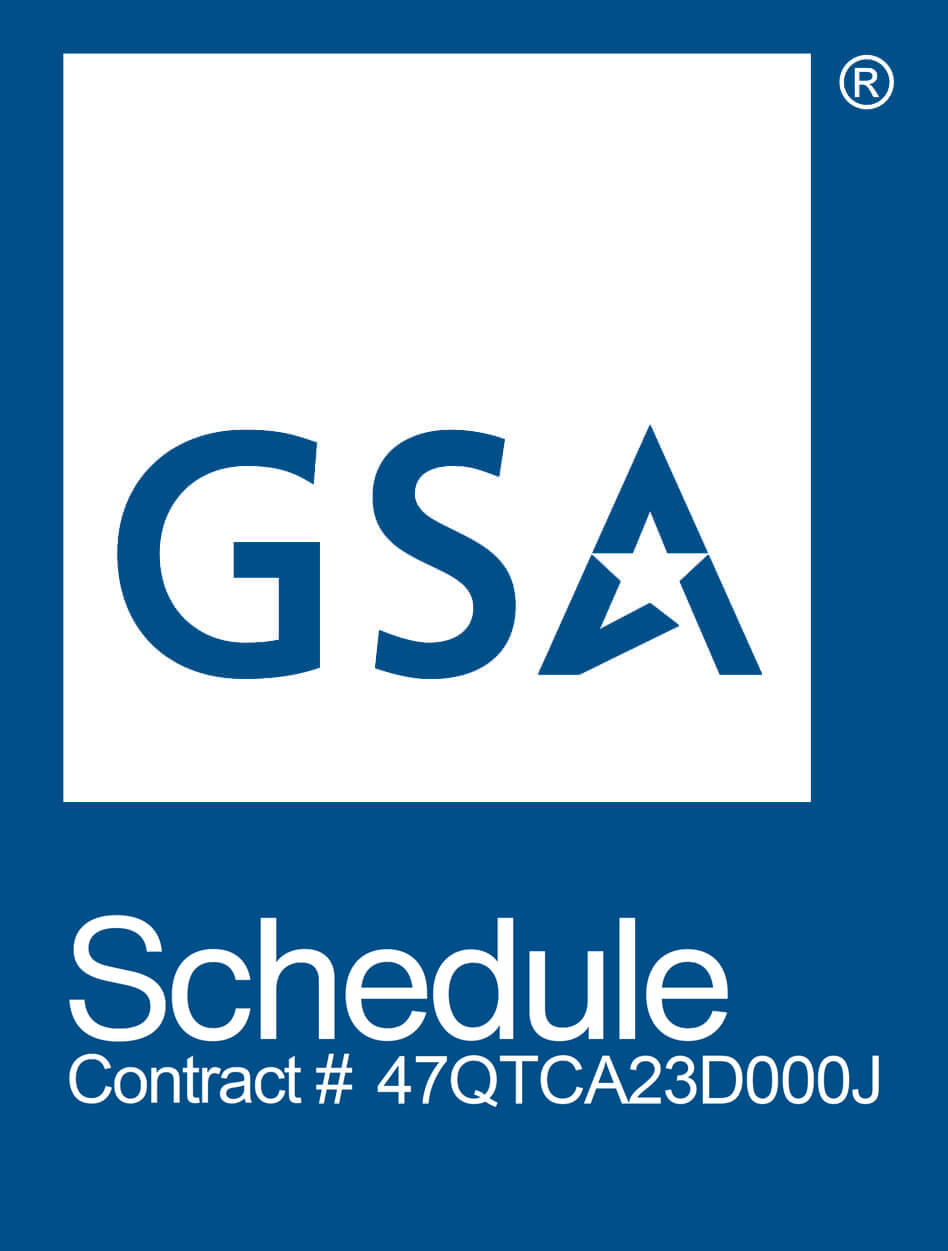
Site Reliability Engineering and What It Can Do For Your Business
Site reliability engineering (SRE) is an approach to system administration that seeks to build and maintain systems in a manner that maximizes their availability and reliability. In recent years, SRE has become an increasingly popular paradigm for businesses of all sizes. This blog post will explore the benefits that businesses can reap from implementing SRE practices. If your business operates in Glendale, Arizona, or anywhere else in the United States, contact CCT today to significantly enhance your IT and cloud capabilities.
Businesses today face more competitive pressure than ever before. In order to stay ahead of the curve, companies need to ensure that their systems are always running at peak performance. Site reliability engineering (SRE) is an approach to system administration that seeks to build and maintain systems in a manner that maximizes their availability and reliability. By embracing SRE principles, businesses can reduce downtime, improve customer satisfaction, and improve their overall productivity.
Site reliability engineering (SRE) is a field of computer engineering that combines aspects of software engineering and operations. The main goals of SRE are to create scalable and highly available systems.
SRE teams typically handle tasks such as capacity planning, monitoring and logging, incident response, and performance analysis. They also work closely with development teams to ensure that new code changes do not cause unexpected outages or performance issues.
Many Glendale, Arizona, businesses are now turning to site reliability engineering to help improve the stability and scalability of their systems. By doing so, they can avoid costly downtime and improve customer satisfaction.
If you’re considering implementing SRE in your business, there are a few things you should keep in mind. First, SRE is not a silver bullet that will fix all of your problems. It’s important to have realistic expectations about what SRE can and cannot do for your organization.
Second, SRE requires buy-in from both management and development teams. Without strong support from both sides, it won’t be easy to implement SRE successfully.
Finally, SRE is not a static process – it’s an iterative journey that should be constantly tweaked and improved over time. With these things in mind, let’s take a closer look at some of the benefits of site reliability engineering.
Service-Disabled Veteran-Owned Small Business (SDVOSB)
Small Disadvantaged Business (SDB)
Small Disadvantaged Business leads to enhanced innovation and creativity, as these businesses often offer unique perspectives and solutions shaped by their diverse backgrounds. Moreover, partnering with Small Disadvantaged Business can provide access to specialized skills and capabilities that might otherwise be overlooked, contributing to improved competitiveness and efficiency.

Transforming for Innovation, Sustainability and Security
Improved Stability
One of the main goals of SRE is to create more stable systems. This is accomplished by reducing the mean time to recover (MTTR) from incidents.
To do this, SRE teams focus on automating tasks and improving processes. By doing so, they can quickly identify and resolve issues before they cause major problems. As a result, systems are less likely to experience extended downtime due to unplanned outages.
Improved Scalability
Another key goal of SRE is to improve the scalability of systems. This means being able to handle increased traffic or load without experiencing performance issues.
SRE teams accomplish this by identifying and addressing bottlenecks in the system. They also work closely with development teams to ensure that new code changes do not adversely impact performance. As a result, businesses can confidently take on new challenges without having to worry about their systems being able to handle the increased load.
Improved Customer Satisfaction
By improving the stability and scalability of systems, SRE can also lead to improved customer satisfaction to help Glendale, Arizona, businesses. When systems are down, customers can’t use your product or service. This leads to frustration and may even cause them to take their business elsewhere.
On the other hand, when systems are stable and scalable, customers can rely on your product or service to meet their needs. This leads to happier customers who are more likely to stick around for the long run.
What is Site Reliability Engineering and How It Works
Site Reliability Engineering (SRE) is a discipline that combines software engineering and operations to build and run scalable systems.
SRE was pioneered by Google, where it was developed to manage the company’s scale and complexity. Today, SRE is used by many organizations to improve the reliability of their systems.
SRE focuses on three key areas: availability, latency, and efficiency.
Availability is the measure of how often a system is available to users. A system is considered available if it is up and running when users need it. To achieve high availability, SREs work to prevent outages and minimize downtime.
Latency is the measure of how long it takes for a system to respond to a user request. To minimize latency, SREs work to improve the performance of systems.
Efficiency is the measure of how well a system uses its resources. To improve efficiency, SREs work to optimize the use of resources such as CPU, memory, and disk space.
Transforming for Innovation and Sustainability securing future competitive advantage
Which Business Problems and Challenges Can Site Reliability Engineering Solve?
One of the benefits of site reliability engineering (SRE) is that it can help organizations identify and solve a range of business problems and challenges. In particular, SRE can help to improve the availability and performance of critical systems and services while also reducing operational costs.
Some of the specific business problems and challenges that SRE can help to address include:
- Improving system availability and uptime;
- Reducing system downtime and outages;
- Improving system performance and response times;
- Reducing operational costs; and,
- Increasing customer satisfaction.
SRE can also help to improve the overall resilience of an organization’s IT infrastructure, making it better able to handle unexpected events and failures.
Overall, SRE can provide significant benefits to organizations that are looking to improve the reliability and performance of their critical systems and services.
Features of Site Reliability Engineering
Some of the key features of site reliability engineering include:
- Automation: SRE teams use automation to manage systems at scale. This includes automated deployment, monitoring, and incident response.
- Scalability: SRE teams focus on ensuring that systems can handle increasing traffic and load without issue.
- Resiliency: SRE teams strive to design systems that are resilient to failure. This includes using redundancy and self-healing systems.
- Service Level Objectives: SRE teams define and track service level objectives (SLOs) to measure the availability and performance of systems.
- Load Testing: SRE teams use load testing to identify potential scalability issues.
- Capacity Planning: SRE teams use capacity planning to ensure that systems have the resources they need to meet demand.
- Configuration Management: SRE teams use configuration management to manage system configurations at scale.
- Monitoring: SRE teams use monitoring to track system performance and identify issues.
- Logging: SRE teams use logging to collect data about system activity. This data can be used for debugging, diagnosis, and trend analysis.
- Incident Response: SRE teams have procedures in place for responding to incidents. This includes identifying the root cause of incidents and taking steps to prevent them from happening again in the future.
- Change Management: SRE teams use change management to control changes to system configurations. This helps to prevent unexpected outages and disruptions.
Benefits of Site Reliability Engineering
Some of the benefits of Site Reliability Engineering are:
Better Metrics Reporting
As the world becomes more reliant on digital services, it is increasingly important to have systems that can handle large amounts of traffic without downtime. SRE is one way to achieve this.
One of the main goals of SRE is to ensure that systems are able to withstand unexpected traffic spikes. This is accomplished by monitoring system performance and capacity closely. When a potential issue is detected, SRE teams work quickly to mitigate the issue before it causes an outage.
This focus on availability also extends to metrics reporting. SRE teams want to be sure that they have accurate data about system performance in order to identify potential issues before they cause problems. To do this, SRE teams often use custom monitoring tools and dashboards. These tools help them to track key performance indicators (KPIs) and identify areas where improvements can be made.
Overall, the goal of SRE is to keep systems running smoothly and efficiently. By doing so, businesses can avoid costly downtime and provide a better experience for their users.
Early Prevention On Issues That Can Affect End Users
SRE teams are often responsible for monitoring the health of their systems and responding to incidents. They also work on improving the resilience of their systems by designing and implementing changes that prevent or mitigate problems. In many cases, SRE teams are also responsible for capacity planning and performance tuning.
One of the key benefits of SRE is that it can help organizations prevent issues before they cause customer-facing problems. By monitoring system health and performance, SRE teams can identify potential problems early and take steps to prevent them from affecting end users.
More Time, More Value
Organizations that have adopted Site Reliability Engineering (SRE) practices have reported significant benefits, including increased time for value-added work and improved mean time to recovery.
Site Reliability Engineering is a set of practices that aim to ensure that systems are always available and performant. SRE teams are responsible for ensuring that systems are up and running 24/7/365. To do this, they use a combination of automated monitoring and response, as well as a manual intervention when necessary.
One of the key benefits of SRE is that it allows organizations to move away from traditional “break-fix” approaches to IT, where systems are only fixed when they break. Instead, SRE teams proactively identify and fix issues before they cause outages. This results in increased uptime and performance, as well as improved mean time to recovery in the event of an outage.
Another benefit of SRE is that it allows organizations to focus on their core business goals rather than spending time and resources on keeping systems up and running. By outsourcing operations to an SRE team, organizations can free up their own staff to work on more strategic initiatives.
Generative AI Software Integration
Boost your business efficiency with our custom Generative AI Business Software, tailored for HR, finance, sales, event management, and customer service. Leveraging advanced natural language processing and AI-driven data science, we specialize in customer segmentation, sales analysis, and lead scoring. Elevate your operations and gain a competitive advantage with our precision-driven AI solutions. Contact us to integrate AI seamlessly into your key systems and transform your business.
Increased Automation
Site Reliability Engineering (SRE) is a set of engineering practices that aim to automate away as much of the toil and drudgery associated with maintaining software systems as possible.
One way that SRE accomplishes this is by increasing the level of automation in the system. This can be done in a number of ways, such as automating the deployment and scaling of applications or automatically monitoring for and responding to incidents.
The ultimate goal of SRE is to make it easier for engineers to focus on adding new features and functionality to their systems rather than having to worry about keeping things running smoothly constantly. By increasing the level of automation, SRE can help to make this a reality.
Meeting Customer Expectations
SRE teams are responsible for ensuring that systems are always available and meet customer expectations.
One of the main goals of SRE is to minimize downtime and prevent outages. To achieve this, SRE teams use a variety of tools and techniques, such as monitoring, automation, and incident response.
Monitoring is used to detect issues before they cause problems. Automation can be used to fix problems when they do occur quickly. Incident response includes having a plan in place for how to deal with problems when they happen.
SRE teams also work closely with developers to ensure that new features can be deployed safely and without affecting the stability of the system.
By using these techniques, SRE teams can help ensure that systems are always available and meet customer expectations.
Drawbacks of Not Leveraging Site Reliability Engineering
If you’re not leveraging site reliability engineering, you may find it difficult to keep your website or application up and running reliably. Site reliability engineers are responsible for ensuring that systems are available and functioning properly. Without them, you may struggle to identify and fix issues in a timely manner. Additionally, you may miss out on opportunities to improve performance or optimize your architecture. As a result, your organization could be at a competitive disadvantage.
What clients say about Cloud Computing Technologies
★★★★★ 5/5
"CCT's diverse skills and expertise has reduced our technical debt by millions of dollars to which we have reinvested into future capabilities."

Mrs. Hanson
★★★★★ 5/5
"With CCT migrating our critical systems into the AWS, 80% our staff is now remote working."

Mrs. Miller
★★★★★ 5/5
"CCT showed us how to meeting regulatory compliance in AWS Landing Zone and greatly improved our cloud security controls."

Mrs. Wilson
★★★★★ 5/5
"CCT provided our agency with application rationalization services and successfuly applicaton migrations meeting all KPIs and SLAs."

Federal Agency
★★★★★ 5/5
"I highly recommend the data science team at CCT. They are technically proficient, great communicators, unbiased, and reduced our false positives by 68%."

Mr. Brown
★★★★★ 5/5
"The team at CCT is knowledgable and insightful in developing a cloud architecture leading to our mission success."

Mr. Robinson
What Are Businesses That Are Not Leveraging Site Reliability Engineering Missing Out On?
Businesses in Glendale, Arizona, that are not leveraging site reliability engineering are missing out on a number of benefits. Site reliability engineering is a relatively new field that focuses on making sure that websites and other online services are available and reliable. It’s an important part of keeping businesses online and ensuring customers can always access their products and services.
There are a number of benefits that businesses can enjoy by leveraging site reliability engineering, including:
- Improved website uptime: One of the main goals of site reliability engineering is to improve website uptime. This means that businesses can rely on their websites being available more often, which can lead to increased sales and customer satisfaction.
- Reduced downtime: When website downtime does occur, it can be quickly and efficiently resolved with the help of site reliability engineers. This leads to shorter periods of downtime and fewer customer service issues.
- Improved performance: Site reliability engineering can help businesses improve the performance of their websites. This can lead to faster loading times and a better overall user experience for customers.
- Increased scalability: As businesses grow, they often need to scale their websites and online services to meet the demands of more users. Site reliability engineering can help ensure that websites are able to handle increased traffic without compromising availability or performance.
- Greater security: Site reliability engineering can also help businesses improve the security of their websites and online services. This includes protecting against attacks such as Denial of Service (DoS) attacks and other types of malicious activity.
Overall, businesses that are not leveraging site reliability engineering are missing out on a number of benefits that can help them improve their online presence and better serve their customers.
Site reliability engineering (SRE) is a methodology that helps businesses create and maintain reliable websites and applications. It’s important to understand the basics of SRE so your business can take advantage of its many benefits. If you want to learn more about SRE or need help implementing it, get in touch with Cloud Computing Technologies. We have years of experience helping businesses in Glendale, Arizona, just like yours, leverage this powerful methodology for increased reliability and efficiency.
Experience and Agile Expertise
you can trust
Years in business
20
Contracts Awarded
180
+
Further information about
Site Reliability Engineering and What It Can Do For Your Business.








